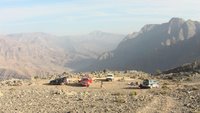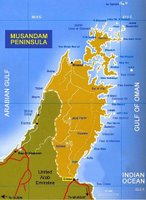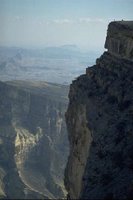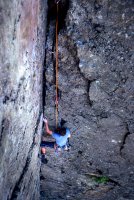
 Thomas Hardy first used the term "Wess*x" in his 1874 novel, Far From the Madding Crowd.In reprinting this story for a new edition I am reminded that it was inthe chapters of "Far From the Madding Crowd," as they appearedmonth by month in a popular magazine, that I first ventured to adopt the word "Wessex" from the pages of early English history, and giveit a fictitious significance as the existing name of the district onceincluded in that extinct kingdom. The series of novels I projected being mainly of the kind called local, they seemed to require a territorialdefinition of some sort to lend unity to their scene.--- from Hardy's Preface to the novel, 1895-1902
Thomas Hardy first used the term "Wess*x" in his 1874 novel, Far From the Madding Crowd.In reprinting this story for a new edition I am reminded that it was inthe chapters of "Far From the Madding Crowd," as they appearedmonth by month in a popular magazine, that I first ventured to adopt the word "Wessex" from the pages of early English history, and giveit a fictitious significance as the existing name of the district onceincluded in that extinct kingdom. The series of novels I projected being mainly of the kind called local, they seemed to require a territorialdefinition of some sort to lend unity to their scene.--- from Hardy's Preface to the novel, 1895-1902
In the preface to 'Desperate Remedies' Hardy adds this footnote: To the foregoing note I have only to add that, in the present edition of 'Desperate Remedies,' some Wessex towns and other places that are common to the scenes of several of these stories have been called for the first time by the names under which they appear elsewhere, for the satisfaction of any reader who may care for consistency in such matters.
The place Hardy called Wess*x, and the area he used as a canvas for his works covers several English counties: Cornwall, Devon, mainly Dorset, and a little bit of Somerset and Wiltshire, and even Hampshire and Gloucestershire. King Alfred the Great ruled Wess*x, and called himself the King of the English, with his capital in Winchester. Hardy’s creation was an imaginative one, to use his own words, and did not coincide exactly with the historical entity that bore the name Wess*x.
http://www.members.aol.com/thardy1001/wess*x.html
Back in the days before the 'nanny state' did everything for us and to us, county boundaries would have had little meaning or significance to locals, other than as a name - in much the same way that borders in the Sahara Desert mean little to its inhabitants, continually following what little rain falls to feed and water their herds and themselves.
Hardy's tales made much of origin, but he kept it to the differences between town and country, city and market town, rather than between counties. Since he was obsessed with things like fate and destiny - with the way our lives seem controlled and guided by forces beyond our control - within and without, the rustics and the landowners, gentleman farmers and shepherds of his day fell foul to pretty much the same things, regardless of their geographical origins: unrequited love, coincidence, the blind hand of fate, plus all the usual failings that man is heir to; unrealistic expectations, expectations that are all too realistic, greed, avarice, and passion.
Hardy probably felt he had enough clay to fashion his characters without going too much into anything more global. His poems are awash with local names; places he would have known intimately, and he peopled these with men and women of his own design, and with himself, particularly in his poems.
In his long poem, ‘A trampwoman’s tragedy’, for instance, Hardy mentions the river Parret, which flows through Bridgewater in Somerset; the Mendip Ridges – probably in present day Gloucestershire, as well as various topographical features of the area – Wynyards Gap and Bredy Knap – places that would have most probably been well known to local people.
When Michael Henchard, later to become the mayor of Casterbridge, sells his wife, Susan, he does it at the fare at Weydon Priors – a well known spot.
With the lesser known names, it is doubtful Hardy called them anything else. However, with the more frequented spots like Dorchester, Hardy substituted his own name – Casterbridge – Castle + bridge – both prominent features of the area around Dorchester.
The novelist’s art is to use to illustrate rather than to describe accurately, and so some of his names would come from the legends and myths of the area in which he lived and wrote.
He writes of Lyonnesse "a hundred miles away" - a name not found on any modern day maps - more likely to be known in the days of King Arthur than more recently. We call that place Tintagel or thereabouts today.
He gives well known places his own names - Bridport is Port Bredy, and The Vale of The Great Dairies, the broad sweep of water meadows and river bends to the north of the county town of Dorset. Go there and you'll find everything you set out to look for: Wellbridge Manor near the village of Wool is still as impressive as it was when Angel Clare left his note under the door - missed, tragically by Tess. And there is Higher Bockhampton – Hardy’s birthplace, immortalised in his poem, 'Domicillium', and Max Gate, the house he built in his later, more prosperous days when he was a very famous man and had come to value his privacy more than he had perhaps done when he was younger.
NB. * = e in consideration to censorship. Robert L. Fielding



















































